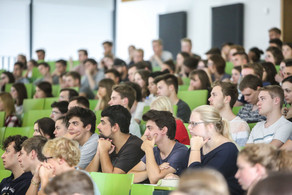Power Consumption Analysis of NB-IoT and eMTC in Challenging Smart City Environments
- Pascal Jörke
- Univ.-Prof. Dr.-Ing. Christian Wietfeld
- Publications
- IDEAL
- SFB 876
In IEEE Global Communications Conference Workshops (GLOBECOM Workshops), Workshop on Green and Sustainable 5G Wireless Networks, Abu Dhabi, United Arab Emirates, December 2018.
Abstract:
The upcoming Internet of Things will introduce large sensor networks including devices with very different propagation characteristics and power consumption demands. 5G aims to fulfill these requirements by demanding a battery lifetime of at least 10 years. To integrate smart devices that are located in challenging propagation conditions, IoT communication technologies furthermore have to support very deep coverage. NB-IoT and eMTC are designed to meet these requirements and thus paving the way to 5G. With the power saving options extended Discontinuous Reception and Power Saving Mode as well as the usage of large numbers of repetitions, NB-IoT and eMTC introduce new techniques to meet the 5G IoT requirements. In this paper, the performance of NB-IoT and eMTC is evaluated. Therefore, data rate, power consumption, latency and spectral efficiency are examined in different coverage conditions. Although both technologies use the same power saving techniques as well as repetitions to extend the communication range, the analysis reveals a different performance in the context of data size, rate and coupling loss. While eMTC comes with a 4% better battery lifetime than NB-IoT when considering 144 dB coupling loss, NB-IoT battery lifetime raises to 18% better performance in 164 dB coupling loss scenarios. The overall analysis shows that in coverage areas with a coupling loss of 155 dB or less, eMTC performs better, but requires much more bandwidth. Taking the spectral efficiency into account, NB-IoT is in all evaluated scenarios the better choice and more suitable for future networks with massive numbers of devices.






